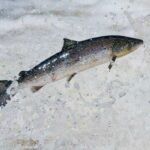New research by Curtin University has uncovered a dramatic revision of Scotland’s geological history, revealing that a massive meteorite struck northwestern Scotland nearly 200 million years later than previously believed. This discovery is not only rewriting Scotland’s ancient past but is also reshaping our understanding of the evolution of life on land.
A New Timeline for an Ancient Event
For decades, scientists believed that a massive meteorite impact, which formed the Stac Fada Member—an important rock formation in northwestern Scotland—occurred around 1.2 billion years ago. However, recent studies have pushed that timeline back to approximately 990 million years ago, a revelation that could change everything we thought we knew about early Earth and its ecosystems.
The Stac Fada Member is far more than just a rock formation. It contains vital clues about the planet’s environment and life during the ancient past. These clues could also shed light on how meteorite strikes might have influenced the development of life on Earth, specifically in non-marine environments.
Professor Chris Kirkland, the lead author of the study and a member of Curtin University’s Frontier Institute for Geoscience Solutions, explained how the research team used tiny zircon crystals as “time capsules” to pinpoint the exact moment of the impact. The zircons, microscopic in size, have the ability to record the precise moment of significant geological events, making them invaluable for dating ancient impacts.

Zircon Crystals: Time Capsules of Ancient Earth
The research team’s breakthrough came from analyzing these zircon crystals, which are formed deep within the Earth and can withstand the harsh conditions of meteorite impacts. As Professor Kirkland noted, some of these zircons were transformed into a rare mineral known as reidite, which only forms under the extreme pressures created by a meteorite strike.
These “broken timepieces,” as Kirkland described them, usually fail to provide accurate dates because the meteorite impact resets the atomic clocks inside the crystals. However, the research team developed a model to reconstruct the timing of the disturbance, which confirmed that the meteorite impact took place 990 million years ago.
The team’s findings are groundbreaking because they provide undeniable proof that a meteorite strike caused the Stac Fada deposit, a significant geological event in Scotland’s history. But it also raises an intriguing possibility: Could large meteorite impacts have played a role in shaping the environment in ways that influenced early ecosystems?
Linking Meteorite Impacts to Early Life Forms
One of the most fascinating aspects of this new study is its connection to the emergence of life on Earth. The revised dating of the meteorite impact places it at a similar time to the appearance of some of the earliest freshwater eukaryotes—organisms that are the ancient ancestors of plants, animals, and fungi.
This coincidence opens up new questions about the relationship between extraterrestrial impacts and the development of life on Earth. Could these meteorite strikes have influenced the environmental conditions in which early life forms thrived?
Professor Kirkland emphasized the significance of this parallel, saying, “This raises fascinating questions about whether large impacts may have influenced environmental conditions in ways that affected early ecosystems.” The timing of these events suggests that the meteorite impact may have had a profound impact on the Earth’s atmosphere, potentially creating conditions that could have supported the evolution of life outside of the oceans.
Clues Pointing to the Impact’s Location
Despite the exciting discoveries made in this study, the actual crater from the impact has yet to be located. The research has, however, uncovered further clues that could eventually lead scientists to the meteorite’s exact landing site.
The Stac Fada Member itself provides a crucial puzzle piece in this search. Its formation and the zircon crystals it contains offer valuable insights into the timing and nature of the impact, which could help scientists locate the crater in future expeditions.
Understanding the timing and effects of ancient meteorite impacts is crucial for exploring their potential influence on Earth’s environment. It could also provide clues about the expansion of life from the oceans to land, a key step in the evolution of life on Earth.
The Big Questions
As scientists continue to analyze the evidence and gather more clues, the bigger question remains: What role did meteorite impacts play in shaping the Earth’s environment during critical moments in the planet’s history? And could these impacts have been a catalyst for the emergence of complex life forms, both in the water and on land?
While the research team has yet to find the crater, their work is already sparking a deeper conversation about the ways in which cosmic events may have shaped the early development of life on Earth. As more studies and discoveries come to light, the hope is that this will bring us closer to understanding how the Earth’s environment—and the life it supports—has been influenced by forces beyond our planet.


















